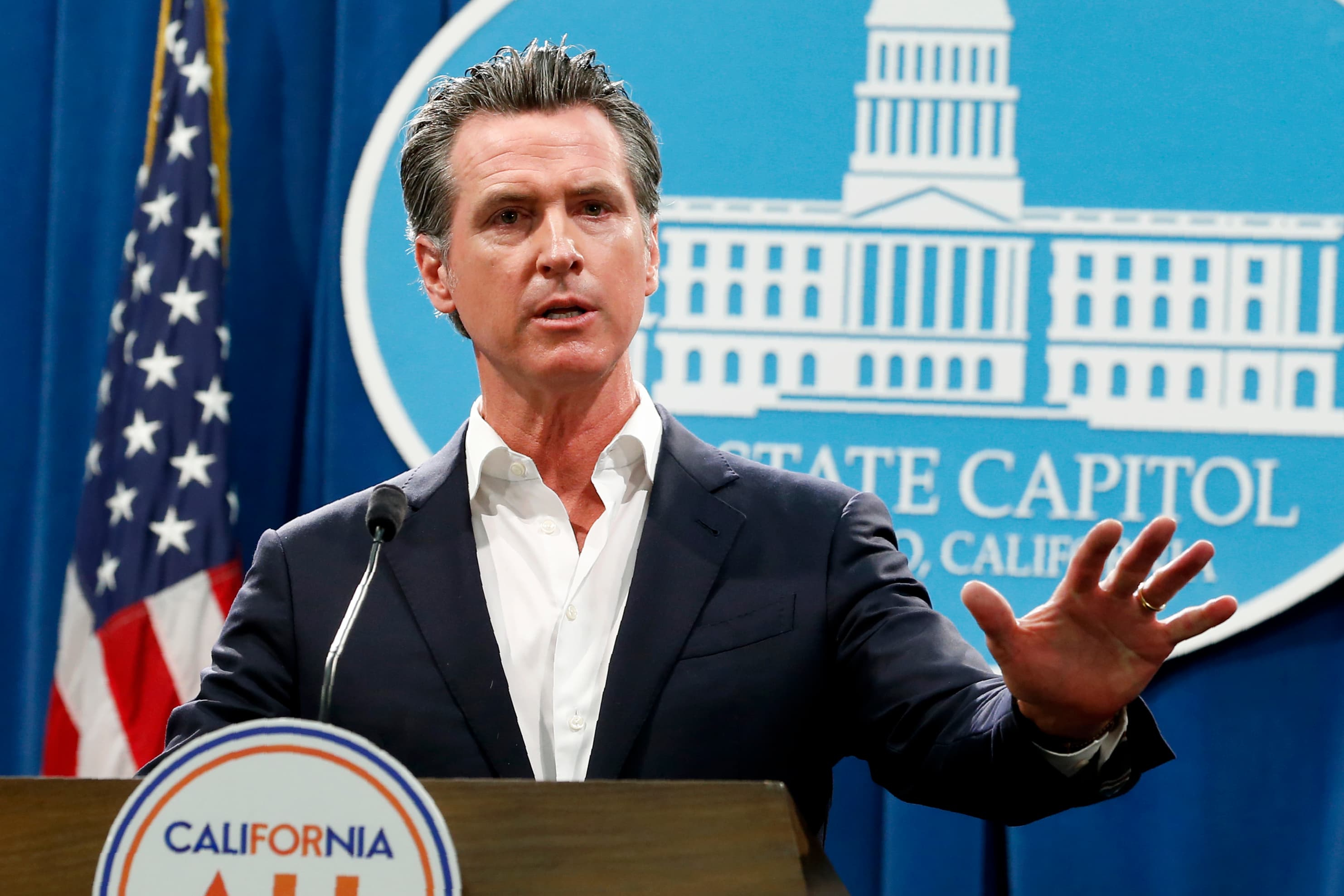One year after filing for bankruptcy, PG&E has worked out deals to borrow money and guarantee more than $25 billion in payouts to wildfire victims, insurers and local municipalities.
It’s even come to terms with bondholders. As a result, its shares have skyrocketed 37 percent so far in January. Mizuho upgraded the stock this week to a “buy.” That optimism may be premature.
The company has to exit Chapter 11 by a crucial June 30 deadline, and there is one huge remaining obstacle: California Gov. Gavin Newsom, who has long talked about a state takeover of the company.
“PG&E, that company no longer exists,” Newsom said this week at an event by the Public Policy Institute of California. He is rejecting PG&E’s plan, saying it leaves the utility with too much debt to survive another disaster, let alone provide the necessary investments to harden infrastructure. The utility serves 16 million customers in Northern California.
“I have no interest in the existing management and existing board,” Newsom said. “It has to be a completely new company.”
And he kept repeating this threat: “There’s going to be a new company or the state of California takes it over.”
Newsom revealed he’s been working on a plan for six months to take over the utility. Newsom has been consulting with Guggenheim, O’Melveny and Colorado turnaround company Filsinger Energy Group. “If PG&E can’t do it, we’ll do it for them,” he said repeatedly.
A critical deadline looms
PG&E doesn’t need the governor’s approval to exit bankruptcy. But technically, the bankruptcy judge will look for approval from the California Public Utilities Commission. The entire commission is made up of the governor’s appointees, and it seems highly unlikely they’d overrule Newsom.
If PG&E does not get approval of its plan in time to exit Chapter 11 by the end of June, the company will not qualify for a new state-managed fund to cover costs of future wildfires caused by power equipment. Money in that new $21 billion fund is coming partly out of profits from the state’s publicly traded utility companies, and partly from new fee their customers will have to pay.
Qualifying for that fund is critical to PG&E’s survival.
“If PG&E can’t get access to that fund, if it can’t get this deal done by June 30, then the lenders who are funding the deal are going to back out,” says attorney Mike Danko, whose firm represents a large number of the 80,000 wildfire victims seeking compensation.
PG&E has said its current deal would allow it to restructure debt and save $1 billion.
Newsom scoffed at that. “There’s also $1 billion in fees, let’s talk about that.,” he told CNBC. “With all due respect, they have work to do on financing. What I don’t want is a utility that comes out of bankruptcy limping.”
The governor told CNBC he has an estimate of what it would cost for the state to take over, but he won’t reveal it yet. “We’re gaming that out, but that estimate is determined on the basis of a number of factors that are not yet in evidence.”
Attorney Mike Danko is concerned what that would mean for his clients. “If the state somehow comes in and takes PG&E over, then [victims] may end up with something, but it’s probably not going to be anything near what they would end up with under the plan that’s on the table.”
“We are going to do justice to the victims,” Newsom responds, “and I can assure with a state takeover, we’ll still do justice to the victims.”
Who would pay for a takeover?
What is not clear is whether Californians who are not PG&E customers would have to help subsidize a takeover and operation of the utility as a state entity. “None of us are naive about what a state takeover of PG&E will do,” said Newsom, “but I can assure you this, if you’re an Edison customer, you’re really upset with PG&E right now. The question for you is what’s PG&E doing for you?”
Newsom said even if California doesn’t take over the utility he wants PG&E’s exit plan to allow the state to step in first if the company seeks bankruptcy again. Danko says such a “kill switch” could kill the deal. “The problem is, once again, the lenders who are providing PG&E the money will back out, because they won’t want to be investing in a company that basically could not be around in a few years.”
Danko is also concerned for another reason. To qualify for the new wildfire fund, PG&E has to emerge as a safe and reliable source of power. Yet the company has already warned there could be years of intentional blackouts during fire season. “That’s the definition of unreliable power, when you have to shut it off,” he says. “My real concern is that PG&E is simply not in the position under this plan or really any other plan to provide power that’s reliable.”
Both the Governor and PG&E say they are continuing to talk. The company told CNBC, “We will be filing an updated plan to reflect the current status of our Plan in the coming days.”
The utility company is making its case before the CPUC this week. Newsom says he is prepared for any outcome.
“If we don’t see real progress in the next few weeks,” he warned, “then we will be laying out the architecture for a very detailed plan.”

